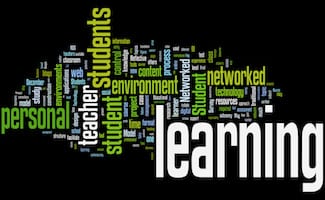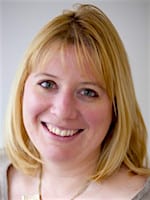How to integrate the theories into a workable pedagogy
by Kristin Novy
 The idea that learning is personal has been a shared notion among those who study how people learn for many years. Multiple intelligences, constructivist theory, learning styles and many other ideas converged over the last decade and made a crash landing into the classrooms of the early 21st century, presenting educators with the perplexing task of determining how to integrate these theories into workable pedagogy. At the same time, technology burst into schools; teachers were first directed to get kids using it effectively, then bombarded with platforms that all sought to “personalize” the experience and increase students’ learning at a dizzying pace. Ed tech products flooded the market, with many promising to align new growth assessments and national standards to engaging and individualized content. Districts and schools scrambled to acquire the best new product and hoped for the one that would be the magic solution for increasing student achievement.
The idea that learning is personal has been a shared notion among those who study how people learn for many years. Multiple intelligences, constructivist theory, learning styles and many other ideas converged over the last decade and made a crash landing into the classrooms of the early 21st century, presenting educators with the perplexing task of determining how to integrate these theories into workable pedagogy. At the same time, technology burst into schools; teachers were first directed to get kids using it effectively, then bombarded with platforms that all sought to “personalize” the experience and increase students’ learning at a dizzying pace. Ed tech products flooded the market, with many promising to align new growth assessments and national standards to engaging and individualized content. Districts and schools scrambled to acquire the best new product and hoped for the one that would be the magic solution for increasing student achievement.
It is no surprise that differentiated instruction, the pedagogy that seeks to teach children by meeting them at their academic levels, learning styles and assessment preferences, emerged as a way to bridge all these pieces. Along with individual learning, or self-paced learning, teachers were tasked with finding a way to meet the needs of many students at once, tailoring lessons to their needs, and then assessing them strategically to ensure the pacing was appropriate for each student. Some educators developed systems for students to pace themselves, essentially managing their own learning as designed and prescribed by the teacher. These were remarkable changes to how a classroom functions in a brief period of time, and an incredible hurdle for teachers to manage while also meeting the punishing demands of No Child Left Behind (NCLB).
What did all this look like in a classroom? In the best cases, balanced literacy and math joined forces with hands-on learning in the sciences and humanities, so that students experienced rich learning experiences that furthered their individual needs while also experiencing heterogenous learning experiences that gave all students a chance to shine and learn from one another. In the worst cases, teachers were tasked with implementing small-group learning without resources, books, or support, and essentially, students learned less than they had before differentiated instruction. I can attest to being subject to the latter: our basals were removed from our rooms after a 3-hour workshop on balanced literacy. We had no resource room, guided reading books or online resources. The public library knew me by name as well as the Kinko’s staff; still, it was a huge struggle.
 As NCLB reached its peak, teachers were…tired. Students were tired. Parents were tired. Students who fared well in this process were weary from constantly being pushed without any input into how they felt. Teachers were asked to look at more, and more, and more data, and ensure everything they did was “data-driven.” Parents were mostly left out of the process, trying to determine why their child got a “C” in reading when all their papers had an “A” at the top.
As NCLB reached its peak, teachers were…tired. Students were tired. Parents were tired. Students who fared well in this process were weary from constantly being pushed without any input into how they felt. Teachers were asked to look at more, and more, and more data, and ensure everything they did was “data-driven.” Parents were mostly left out of the process, trying to determine why their child got a “C” in reading when all their papers had an “A” at the top.
But because teachers and students are resilient and fiercely determined, the last few years has seen the most thoughtful and promising breakthrough in schools since the 1950s—personalized learning. When everyone stopped to take a breath, the pieces of the puzzle began to connect. Yes, students need to be taught at their level to keep growing…but what is their role in that process? Where do students get a voice? How can technology best be used as a tool for learning, and not as a replacement for teachers? Academic data is important, but what about social-emotional skills, personal interests, cultural backgrounds and collaborative work skills? How can we involve families in schools to increase their ability to connect and benefit from the school’s resources and community?
Personalized learning seeks to provide students with an educational experience that is an answer to these questions. There is a way to merge all these pieces in a way that respects teacher practice, uses data in an informed way that allows for more authentic accountability, and encourages students to develop the non-academic skills they will need to succeed in the global society that is emerging before us; one that requires not just the ability to use technology and process information quickly, but also the emotional intelligence and collaborative skills needed to work effectively with people from a myriad of backgrounds and perspectives.
I have sought to answer these questions as I have developed the personalized learning theory that guides the school where I serve as principal, Christopher House Elementary in Chicago. Since the school opened in 2013, in the infancy of personalized learning, I have had the great challenge and privilege of developing personalized learning into its roots. Here is what I have found necessary to consider when planting the seeds of personalized learning into a school, new or well-established, urban or rural, open-minded or resistant.
 The family matters. Our organizational model emphasizes immersive family supports, including case management, tailored workshops, food pantry and emergency assistance. Consider what your community needs most, if possible by conducting a needs assessment, holding focus groups or conducting family assessments. Every community has needs, and every school is made better by having an engaged family community. Thinking about your families, the strengths they can bring and the ways in which the school can help them flourish, is the first critical step in establishing a personalized learning environment.
The family matters. Our organizational model emphasizes immersive family supports, including case management, tailored workshops, food pantry and emergency assistance. Consider what your community needs most, if possible by conducting a needs assessment, holding focus groups or conducting family assessments. Every community has needs, and every school is made better by having an engaged family community. Thinking about your families, the strengths they can bring and the ways in which the school can help them flourish, is the first critical step in establishing a personalized learning environment.- Allow your staff to teach their hearts out. Teachers are organically drawn to the major tenants of personalized learning—allowing students to help choose, instructing based on their interests, teaching students to work well together on authentic tasks, and setting them up to be as successful as possible by meeting them where they are. The challenge is having all the necessary tools in your toolbox to manage all of this. We have had great success partnering with LEAP Innovations, a Chicago-based nonprofit helping schools think through personalized learning that frequently releases the tools their partner schools have created as a free database. Teachers must be given tools, and they need to be implemented systematically. I recommend introducing one or two new personalized learning strategies per semester.
- Social-emotional learning (SEL) is just as important as academic. Explicit teaching of skills through an SEL curriculum is a necessity. In addition, a monitoring tool as such as the Devereux Student Strengths Assessment (DESSA) can help teachers identify students in need of extra assistance developing these skills and help inform Tier II and III supports. The entire school community, however, needs to embrace the idea that all students are unique and need unique tools to be successful in school. Personally, I am not a fan of all-school systems like Positive Behavioral Interventions & Support (PBIS) for this reason. At Christopher House, we wholeheartedly embrace Responsive Classroom techniques, and our behavioral code follows a similar structure of logical systems that build emotional competency.
- Find the balance between emergent learning and backwards planning. Using a Reggio-inspired early childhood program, we have sought to blend the emergent/inquiry-based approach with backwards planning. Student choice, designing of assessment tools and project-based learning are ways we are bridging these two pedagogical styles, with the goal of bringing the best of both—innate student curiosity and teaching with clear goals—to the forefront.
 Personalized Learning is not Blended Learning. As principal, I will not replace the ability of my teachers to instill in our students a lifelong love of reading and learning with a computer program. My incredibly skilled and caring teachers teach our students how to read, and how to connect to texts in powerful ways. I will, however, give my students access to more texts and help them learn new skills at their level with technology. Whatever programs you choose to incorporate, vet them thoroughly and ensure they align with your curriculum and/or help fill a need with skill gaps. Blended learning platforms are a tool in your personalized learning toolbox, and the right ones can be a great one. Personalized learning, however, is about all the tools working in tandem to build the schools our students deserve.
Personalized Learning is not Blended Learning. As principal, I will not replace the ability of my teachers to instill in our students a lifelong love of reading and learning with a computer program. My incredibly skilled and caring teachers teach our students how to read, and how to connect to texts in powerful ways. I will, however, give my students access to more texts and help them learn new skills at their level with technology. Whatever programs you choose to incorporate, vet them thoroughly and ensure they align with your curriculum and/or help fill a need with skill gaps. Blended learning platforms are a tool in your personalized learning toolbox, and the right ones can be a great one. Personalized learning, however, is about all the tools working in tandem to build the schools our students deserve.
Author
 Kristin Novy is principal of Christopher House Elementary School in Chicago, Illinois. Kristin has served schools in multiple Chicago neighborhoods over the past thirteen years as a teacher, literacy coach and Resident Principal and now Principal. As an instructional leader serving culturally and linguistically diverse student populations, she became a leader in creating curriculum and assessments aligned to the Common Core State Standards at the district level.
Kristin Novy is principal of Christopher House Elementary School in Chicago, Illinois. Kristin has served schools in multiple Chicago neighborhoods over the past thirteen years as a teacher, literacy coach and Resident Principal and now Principal. As an instructional leader serving culturally and linguistically diverse student populations, she became a leader in creating curriculum and assessments aligned to the Common Core State Standards at the district level.
As a literacy coach, she served a pivotal role in increasing student achievement by coaching teachers, implementing balanced literacy, and working with families to create a culture of high expectations and a love of reading and learning. She has created strong leadership teams at two schools that used data to develop and monitor student progress, resulting in outstanding student growth and more invested staff.
She also developed literacy outreach programs at multiple schools to support and invest families in their children’s education. Kristin holds a B.A. in Journalism from Indiana University, an M.A. in Teaching from Dominican University, an M.Ed. in Curriculum and Instruction from National Louis University, and earned her school leadership licensure from DePaul University. She achieved National Board Certification in 2009.
Now in her fourth year as principal of Christopher House Elementary, Kristin is proud to be leading the development of an outstanding whole-child focused school that prepares children for success and happiness in life. She can be reached at knovy@christopherhouse.org, and you can follow Kristin on Twitter.
Further Reading
- Education Week – What Is ‘Personalized Learning’? Educators Seek Clarity
- Forbes – 5 School Technologies To Watch: Personalized Learning Is Here
- EdSurge – Personalized Learning Is a Problem of Privilege



 The family matters.
The family matters.  Personalized Learning is not Blended Learning.
Personalized Learning is not Blended Learning.